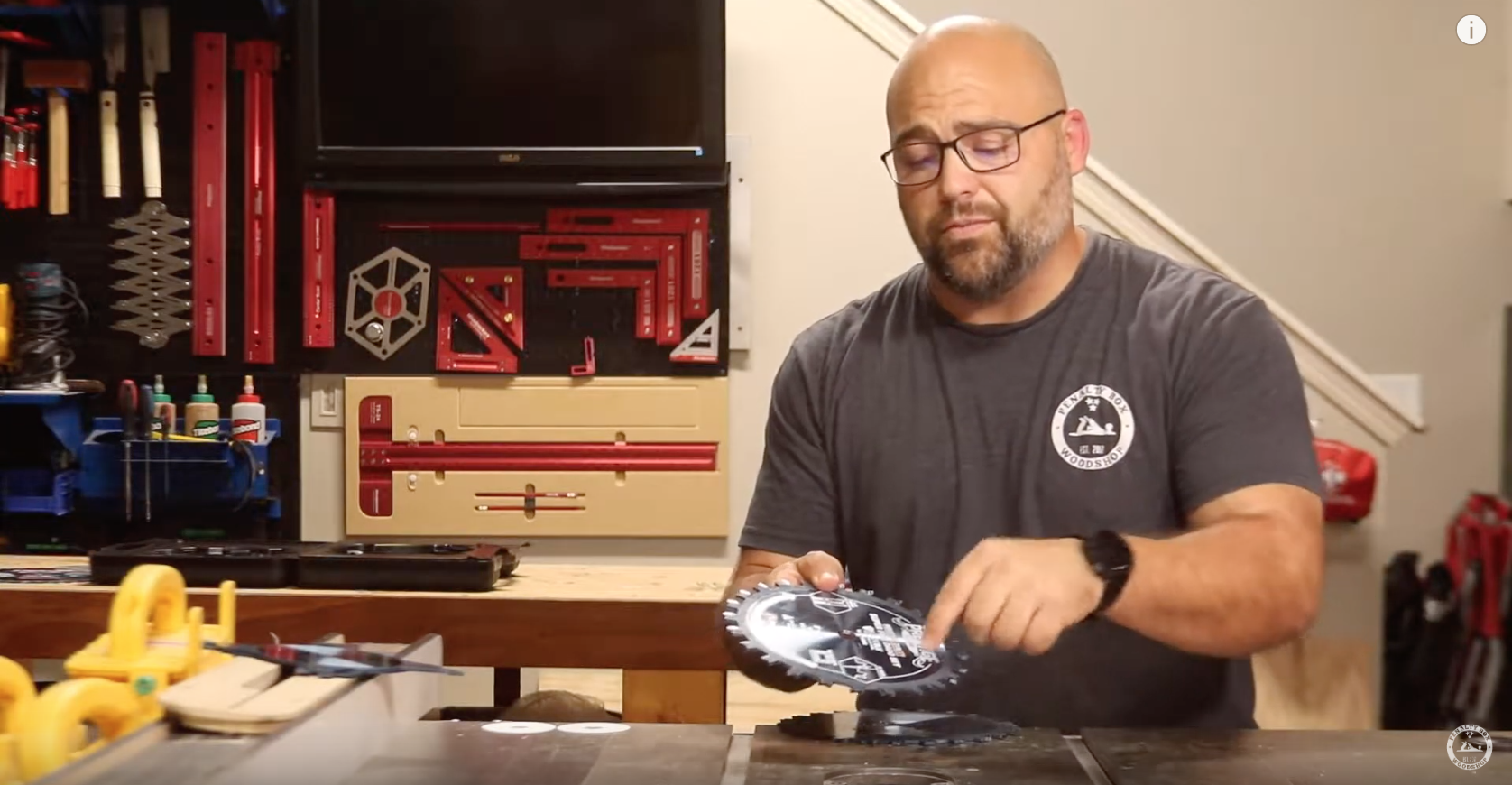How to Install and Use a Dado Stack
This blog and video is a full tutorial showing the set up process and use of a Dado Stack. It also shows examples of cutting dados, rabbets, and tenons with the Dado Stack. This is intended to educate not only beginner woodworkers but also any woodworker that has not had much experience with a Dado Stack. A Dado Stack can be a very useful and versatile tool in any wood shop!
**Always follow the installation and usage directions on YOUR dado stack and table saw. Always be sure to unplug your table saw when changing the blades**
Before we get started please click here to subscribe to my YouTube channel for more projects.
Tools Used during this build:
Micro jig Matchfit Dovetail Clamps
Canon EF 28-135mm f/3 Zoom Lens
Dado Stack Introduction
Almost every dado stack should come with the following parts:
Outer blades - Every dado stack has two outer blades, these blades have numerous teeth and typically have writing on one side. Please, read the writing on the these blades because it will explain which direction that they will need to be installed.
Every Dado stack that I have worked with has required the side with the writing to be toward the outside of the stack when installed. Follow the instructions on YOUR Dado Stack blades to ensure a safe installation.
Chippers - Depending on the brand, these blades should have between 2 and 4 teeth and will come in different widths. My dado stack came with 5 chipper blades of different widths and each blade has 4 teeth. These blades will go between your outer blades when installed and are for adjusting the width of your cut.
Spacers - These little guys are for fine tuning the width on your cut. Typically a dado stack will come with variety different width spacers.
How to Determine the Width of Cut
To determine the width of the dado cut for your project lay a piece of wood, that is the same width as the piece you will be fitting into the dado joint, on a flat surface. I like to use my table saw bed for this since I know its nice and flat.
Lay one outside blade down on the bottom and then start to stack the chipper blades. Be sure that the blades of the chippers are alternating with the teeth of the outer blade and ensuring that they do not touch.
If you are adding more than a few spacers just be sure to spread them out throughout the stack for an even cut.
You can place the last outer blade on top of the stack and check to see if the hight of the stack matches the hight of the wood. Once you have the correct hight you you know what blades you need to install.
Installing the Blades
When it comes to installing the blades, remove your regular table saw insert and blade. You will need a table saw insert wide enough to accommodate your dado stack width. You will also need to remove your riving knife if you have one on your saw.
Install your first outer blade with the correct orientation as stated in the blades directions. Then install the chippers and spacers (if needed), making sure that the teeth are alternating and not touching.
When installing your dado stack insure that you have at least two or three threads exposed after the stack is installed so that the nut has plenty of threads to be tightened properly. When in doubt leave plenty of threads to tighten the stack properly! Its better to make two passes with a stack that is not wide enough than to have a loose dado stack and potentially dangerous situation. Arbor lengths on saws can differ drastically so the width of stack that you can fit on your saw might be very different that what someone else can fit.
Lastly, install the second outer blade (again insuring proper orientation) and tighten using a scrap piece of wood to wedge the blades and keep from spinning.
Do not use the arbor stop on your saw to tighten the blades when using a dado stack. While it will prevent the arbor from moving it will not prevent the inner blades from coming out of alignment.
Place the proper table saw insert in your saw.
Cutting Dados With the Miter Gauge
One of the most common cuts with a dado stack is using your miter gauge and a backer board to cut dados.
Please refer to the video attached to the top section of this blog for more details on these cuts.
Cutting Dados With Your Table Saw Fence
Another method for cutting dados is to use your table saw fence to cut dados across the long edge of your piece. One important thing to note in this (or any) process is to use the proper push blocks to keep your fingers and hands a safe distance from the blade.
Please refer to the video attached in the top section of this blog for more details on these cuts.
Cutting Rabbets
To cut rabbets with the dado stack use a sacrificial fence so that you can have the blade cut all the way to the fence.
Please refer to the video attached in the top section of this blog for more details on these cuts.
Cutting Tenons
Use the sacrificial fence to also cut tenons when making mortise and tenons. The dado stack makes this cut quick and easy.
Agian, please refer to the video attached in the top section of this blog for more details on these cuts.

























